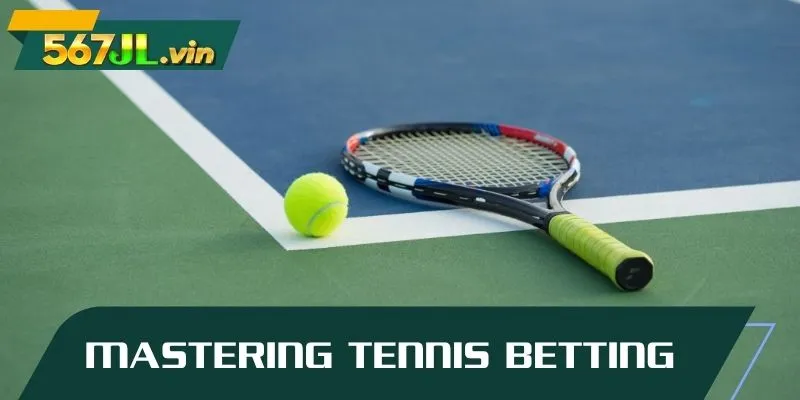Tennis betting has become a leading form of sports wagering, celebrated for its blend of skill, speed, and unpredictability. Platforms like 567JL provide countless chances for bettors to test their insight across global tournaments. Whether you’re supporting a top seed or finding value in underdogs, understanding match dynamics and player form can transform every prediction into an exciting and potentially rewarding experience.
Contents
Understanding tennis betting and its basic principles

Tennis betting stands out from many other sports because each match depends entirely on individual performance rather than team coordination. Every serve, rally, and break point directly impacts the outcome, creating a fast-paced environment where odds shift in real time. Unlike team sports where collective effort can mask weaknesses, tennis exposes every player’s form, mindset, and adaptability on the court.
To succeed, bettors must analyze multiple factors before placing a wager. Player fitness, current ranking, and recent form are key indicators of potential performance. Additionally, the playing surface – whether grass, clay, or hard court – affects how each athlete performs. For example, clay courts favor baseline players with stamina, while grass benefits powerful servers who can finish points quickly. Weather also plays a significant role, as wind and temperature can influence serve accuracy and ball speed.
Another essential principle of Tennis betting is understanding value. Successful bettors don’t simply choose favorites; they identify when odds underestimate a player’s true potential. This method demands patience, data-driven analysis, and emotional discipline. Live betting platforms enhance the excitement, letting players adjust wagers as the match unfolds. Ultimately, those who blend strategy with sharp observation can turn every point and set into a meaningful opportunity for consistent profit.
How to play tennis betting with general rules

Getting started with sports wagering requires more than luck – it involves learning match structure, understanding odds, and applying practical knowledge. Below are three key aspects every bettor should master.
Understand the structure and flow of tennis betting
Before placing any wager, it’s essential to understand how a tennis match is structured. A standard match is divided into sets, and each set is made up of games. To win a set, a player must win at least six games and lead by two. In men’s Grand Slam tournaments, matches are best-of-five sets, while most other events use a best-of-three format.
Knowing this structure helps bettors anticipate momentum shifts. For example, a player who starts slowly may still recover in later sets, providing valuable opportunities for live betting. Tie-breaks, which occur when a set reaches 6–6, can also influence outcomes dramatically, especially for players known for composure under pressure. Understanding how scoring works and how different players respond at critical points allows bettors to make more accurate predictions and strategically plan wagers throughout the match.
Understand betting odds and market types
Every tennis betting market is based on odds that reflect the bookmaker’s evaluation of a player’s chances to win. Decimal, fractional, and American formats are the most common ways odds are displayed. Bettors should learn how to interpret these numbers to calculate potential payouts and identify valuable bets.
There are several market types beyond simply picking a winner. You can wager on the total number of games (over/under), correct set scores, or handicaps that balance matches between unevenly ranked players. Some prefer betting on specific in-match events, such as the number of aces or double faults. Understanding the risk and reward of each market helps players diversify their betting strategy. Moreover, analyzing odds movement before a match can reveal insider trends or shifts in public opinion that affect pricing, offering opportunities for smarter and more profitable wagers.
Apply general betting discipline and strategy
Having a structured strategy and maintaining discipline are crucial when playing tennis betting. Many beginners make emotional decisions, chasing losses or overestimating favorites. A strong betting plan includes setting clear limits, tracking bets, and evaluating performance over time. Successful bettors often rely on a staking system – such as flat betting or proportional staking – to manage risk effectively.
It’s also important to research beyond statistics. Consider player motivation, travel fatigue, or recent injuries that could impact performance. Live betting requires even more focus, as quick reactions can determine profitability. Bettors who combine patience with consistent analysis typically achieve better long-term results. Finally, keeping emotions in check and sticking to data-driven insights ensures that betting remains both enjoyable and sustainable, turning tennis matches into opportunities for skillful, strategic engagement rather than risky speculation.
Common mistakes beginners make in tennis betting

Even though tennis betting offers exciting opportunities, many beginners fall into avoidable traps that hinder their long-term success. Recognizing these mistakes early helps bettors build better habits and improve accuracy. Below are some of the most common errors newcomers make when wagering on tennis.
- Betting emotionally instead of logically: Many beginners wager based on personal preference or favorite players. Emotional bias clouds judgment and prevents objective analysis of odds, form, and surface advantages before placing bets.
- Ignoring surface and player conditions: court type or fitness levels is a common mistake. Grass, clay, and hard courts dramatically influence match results, while fatigue or injury can alter performance unexpectedly.
- Misunderstanding betting markets and odds: Some players jump into wagers without fully grasping market types or odds calculations. Without this knowledge, bettors risk undervaluing good opportunities or misjudging payout potential entirely.
- Poor bankroll management habits: New bettors often stake too much on one match or chase losses after defeat. Consistent money management, setting limits, and disciplined staking ensure longer participation and sustainable success.
- Neglecting match research and statistics: Skipping data analysis reduces accuracy. Reviewing head-to-head stats, player form, serve performance, and break-point conversion rates enhances judgment and identifies hidden value in odds.
Conclusion
In the fast-paced world of tennis betting, success relies on preparation, patience, and sharp analytical thinking. By understanding match dynamics, studying player trends, and using platforms like 567JL, bettors can enjoy both the thrill of competition and the satisfaction of strategic wagering. Ultimately, smart play isn’t just about predicting outcomes – it’s about mastering timing, insight, and long-term consistency.

